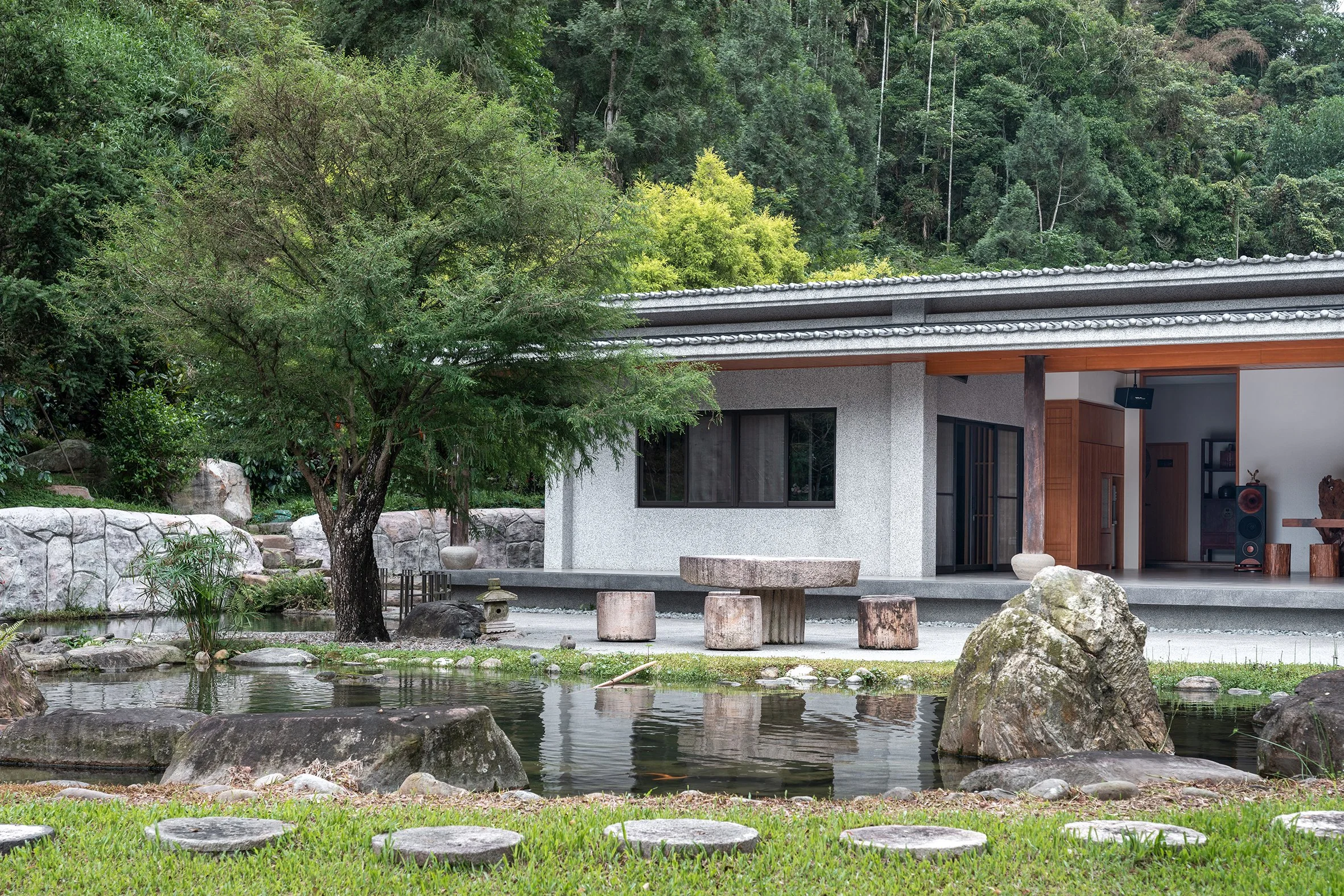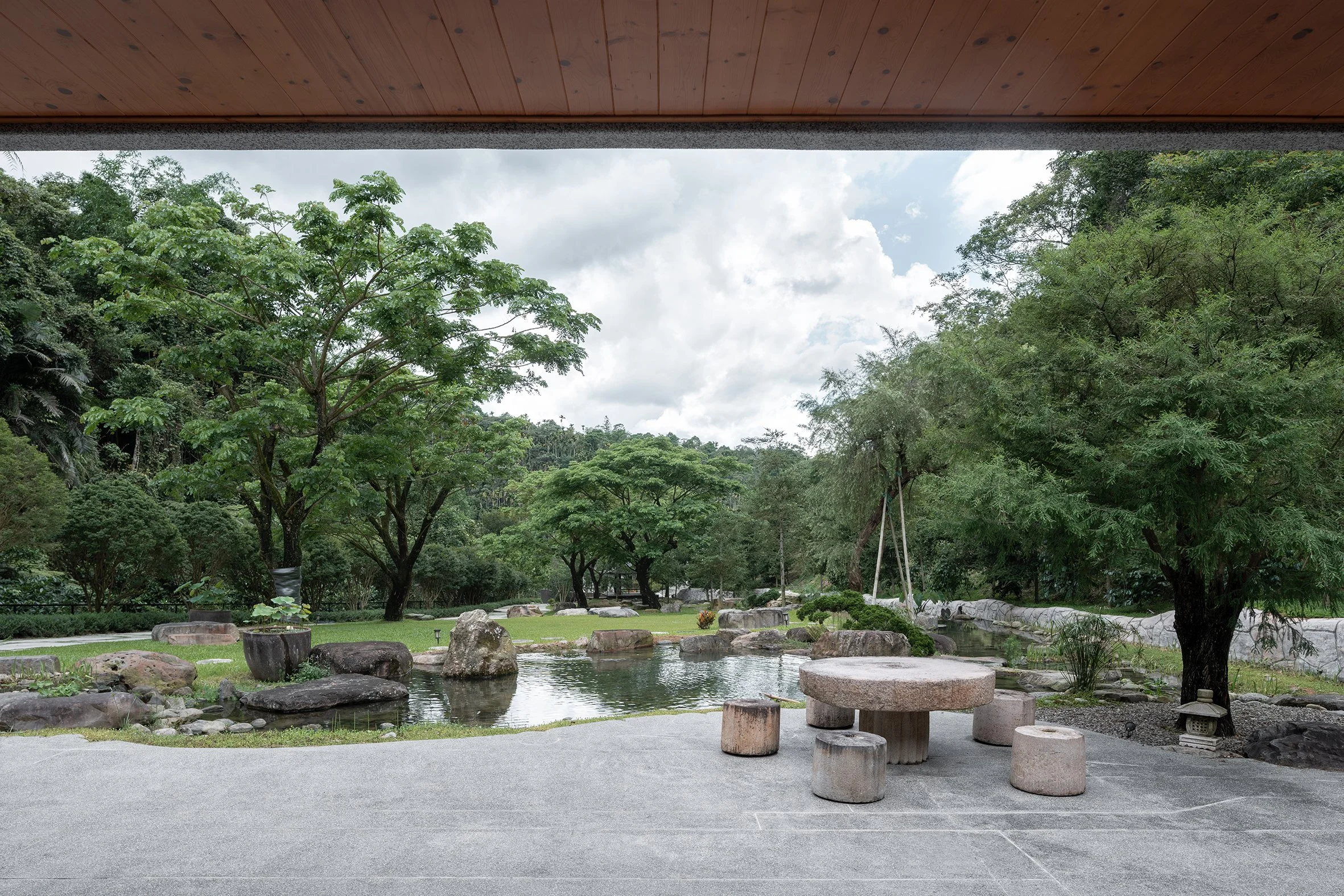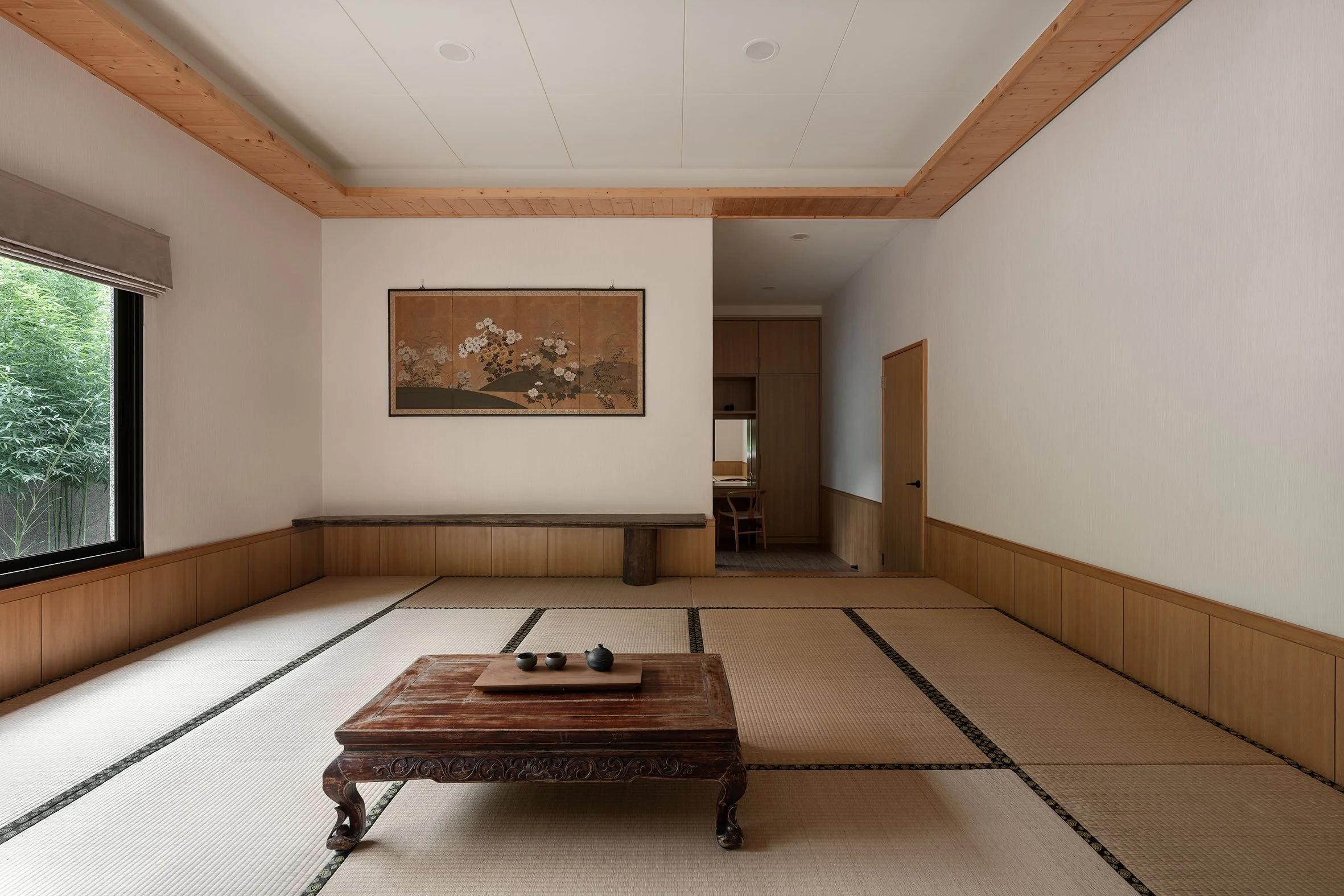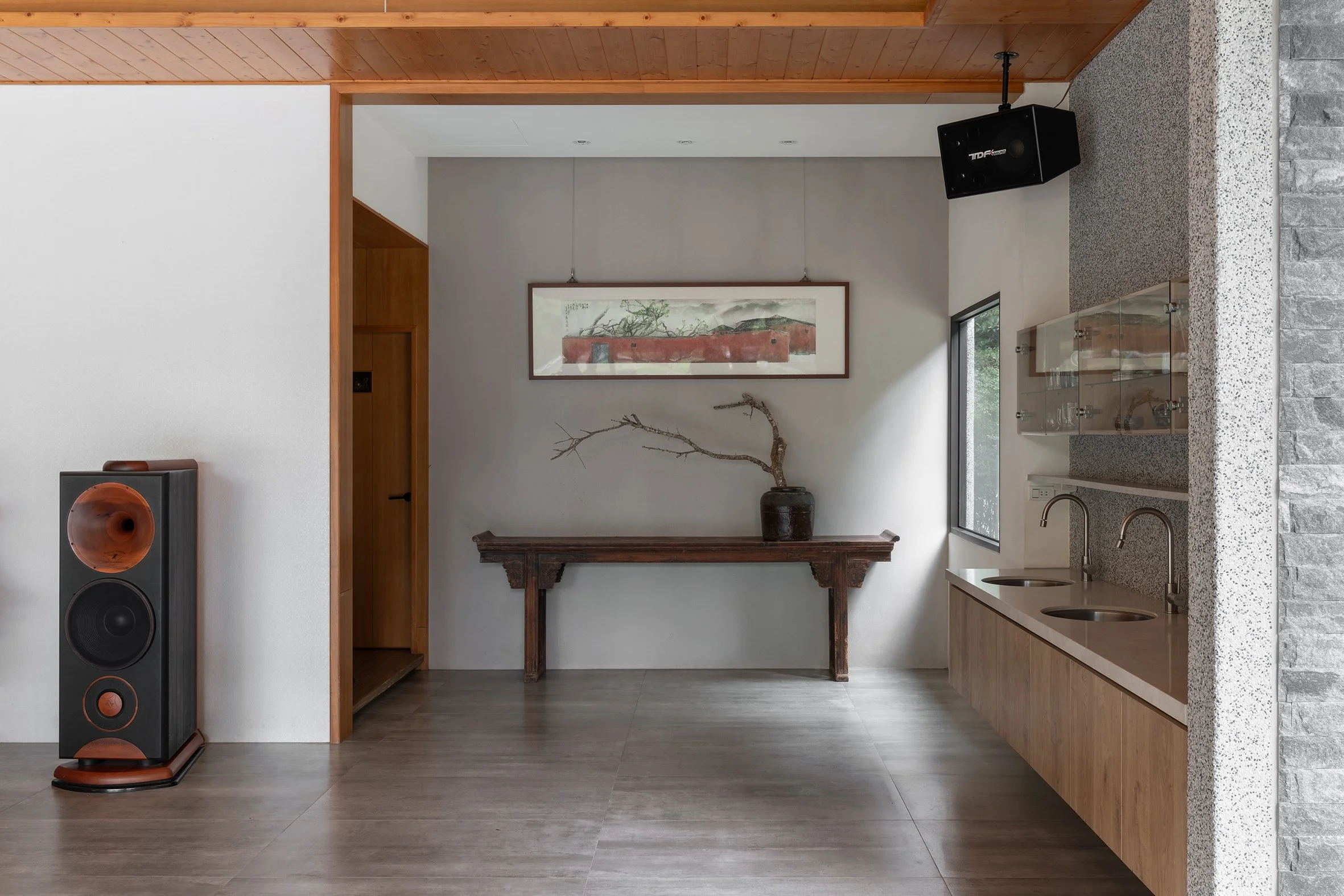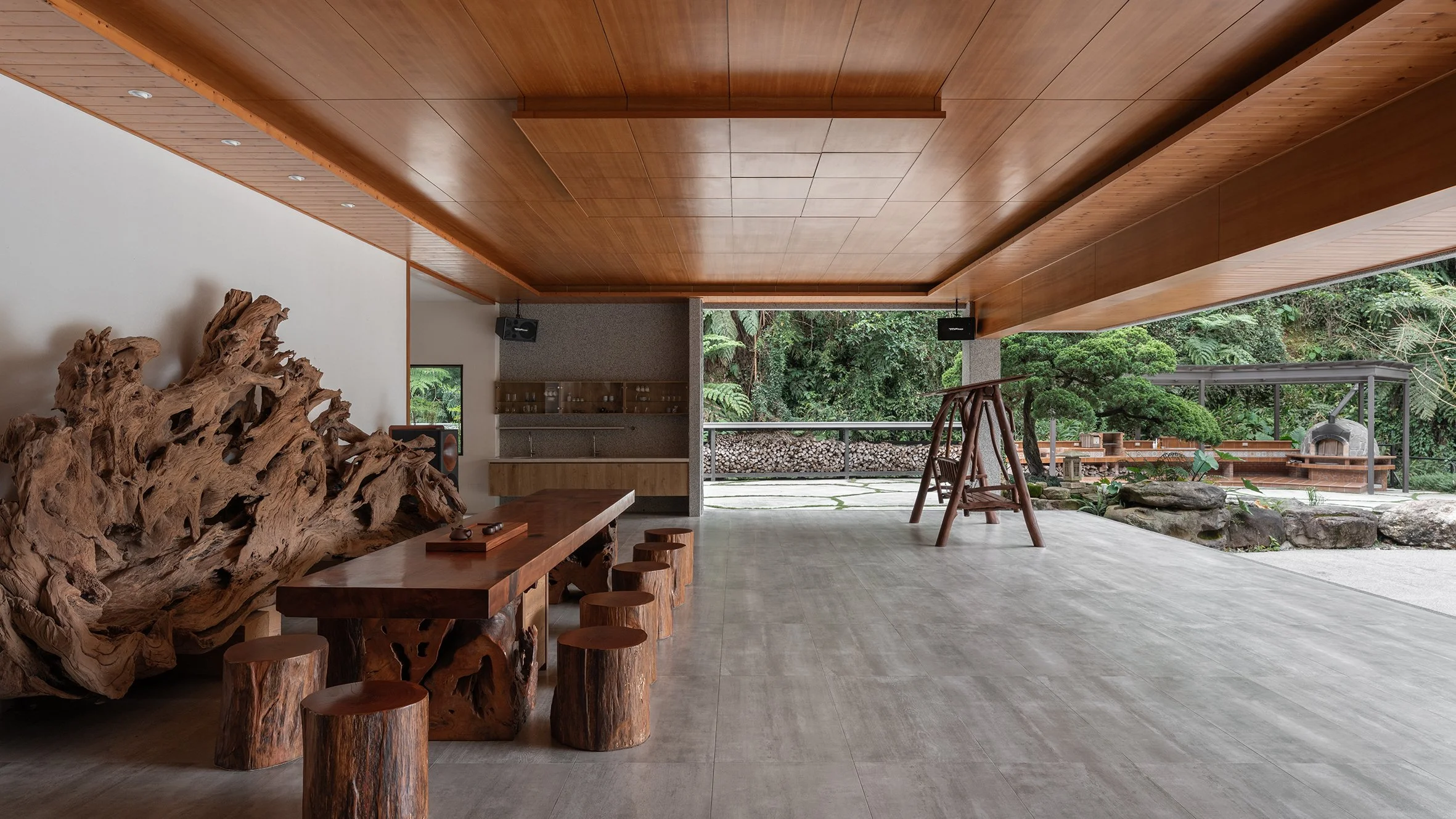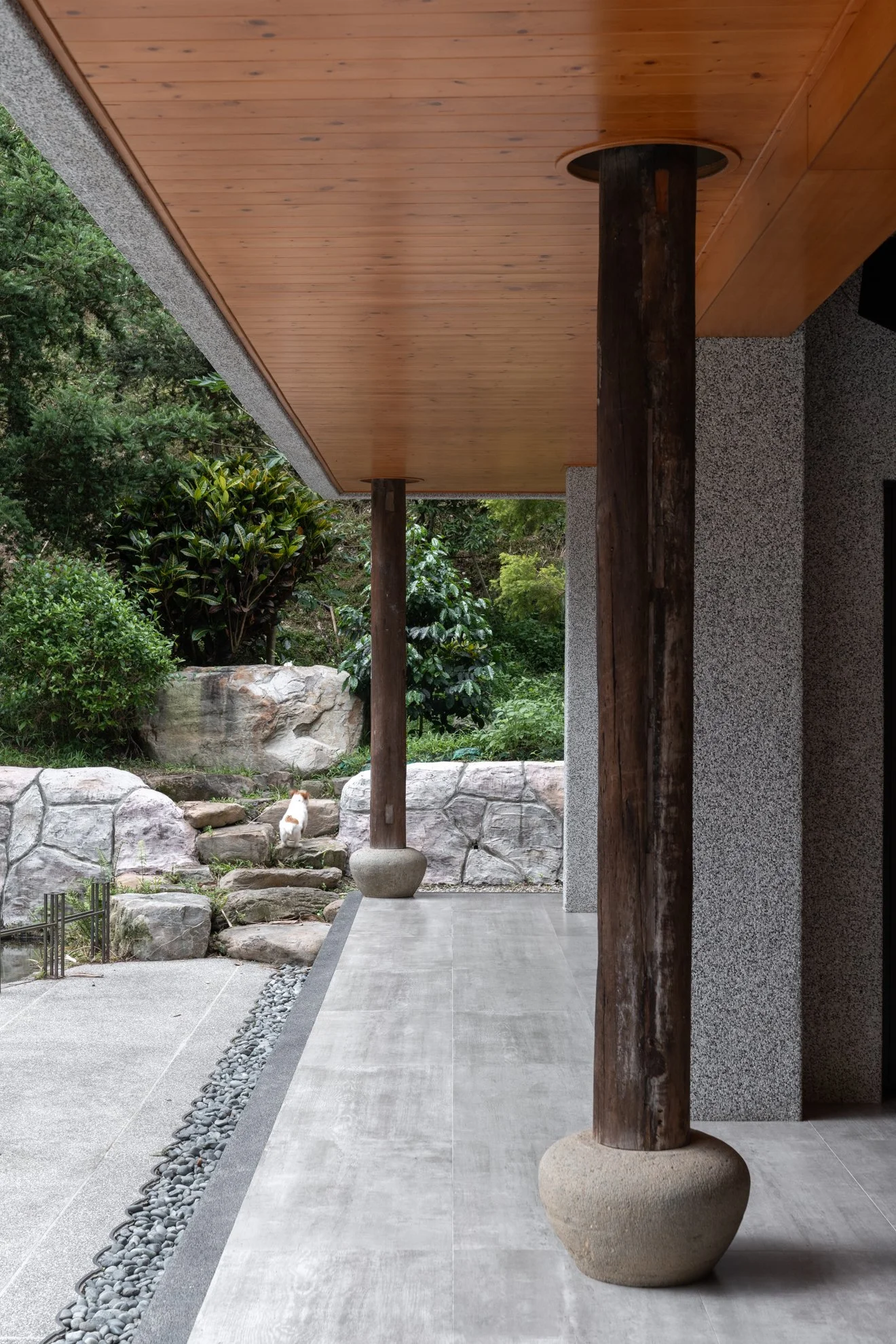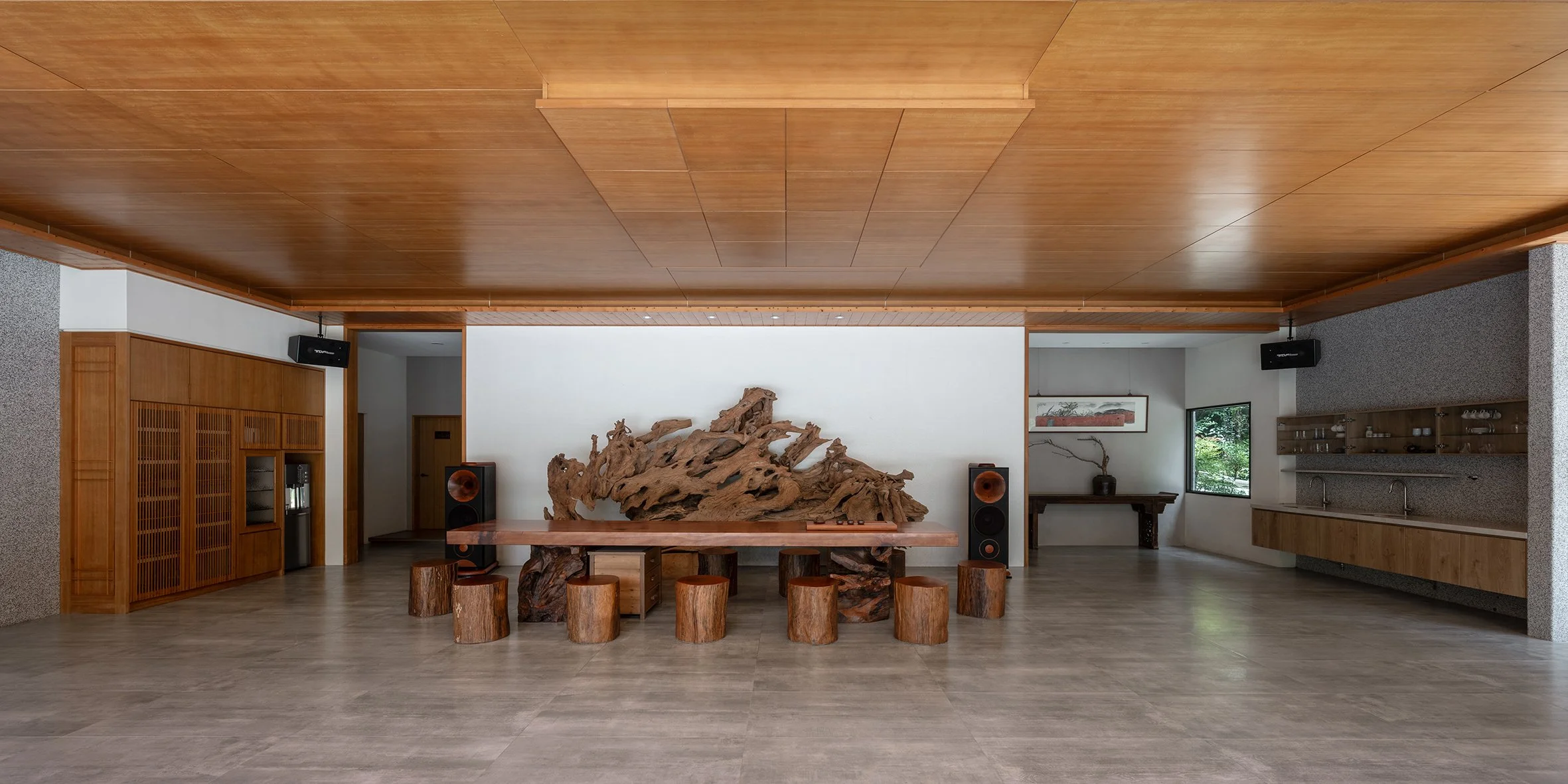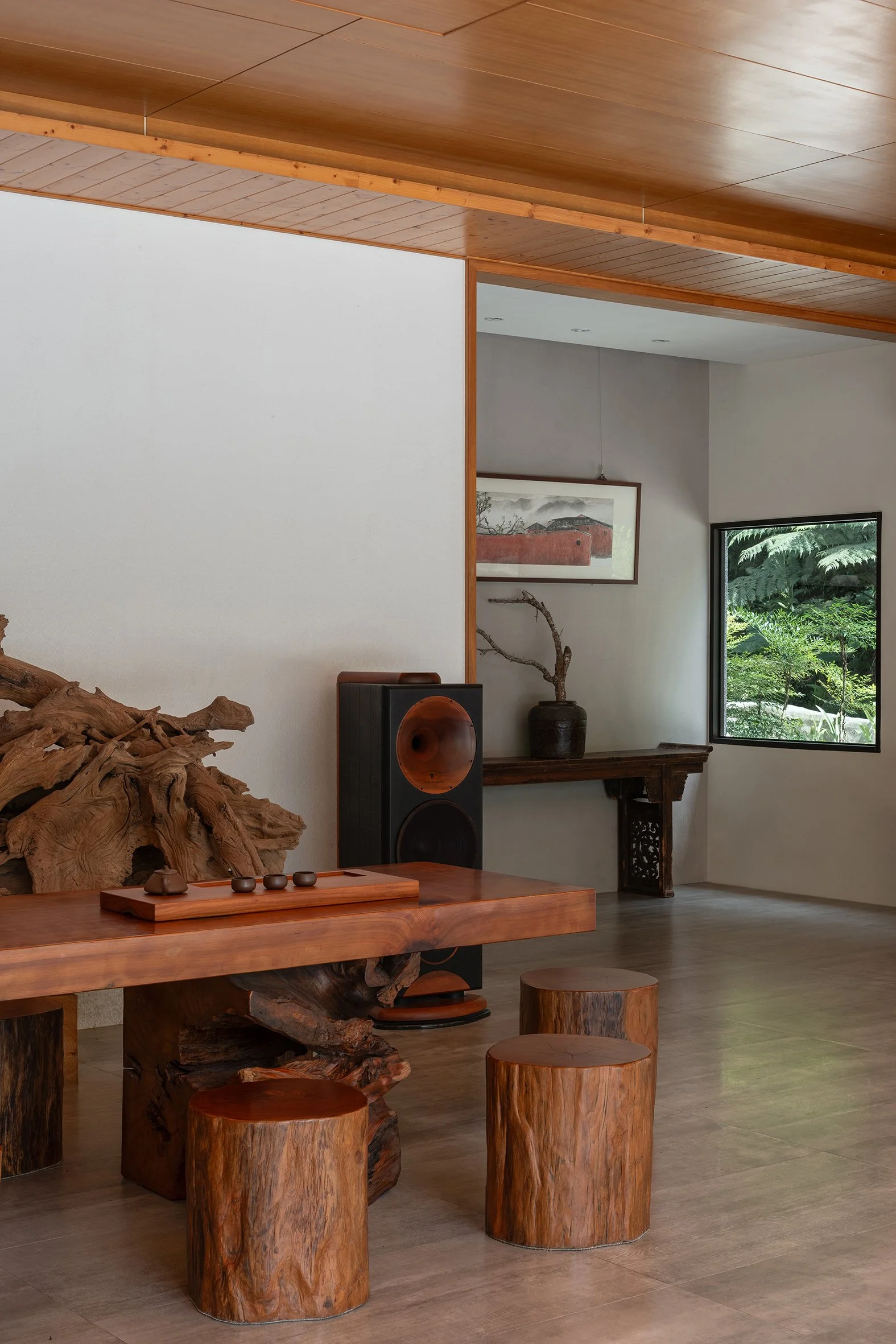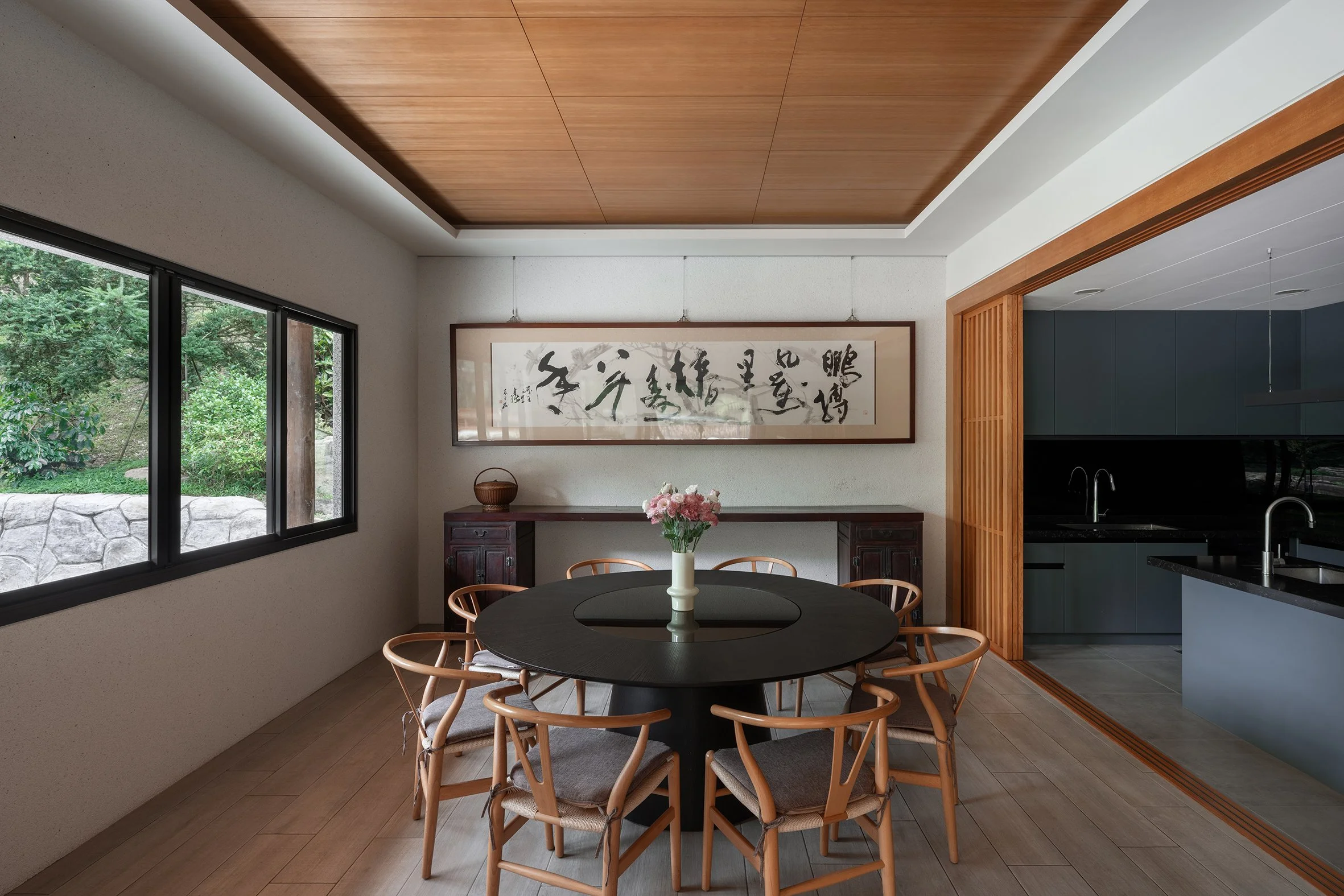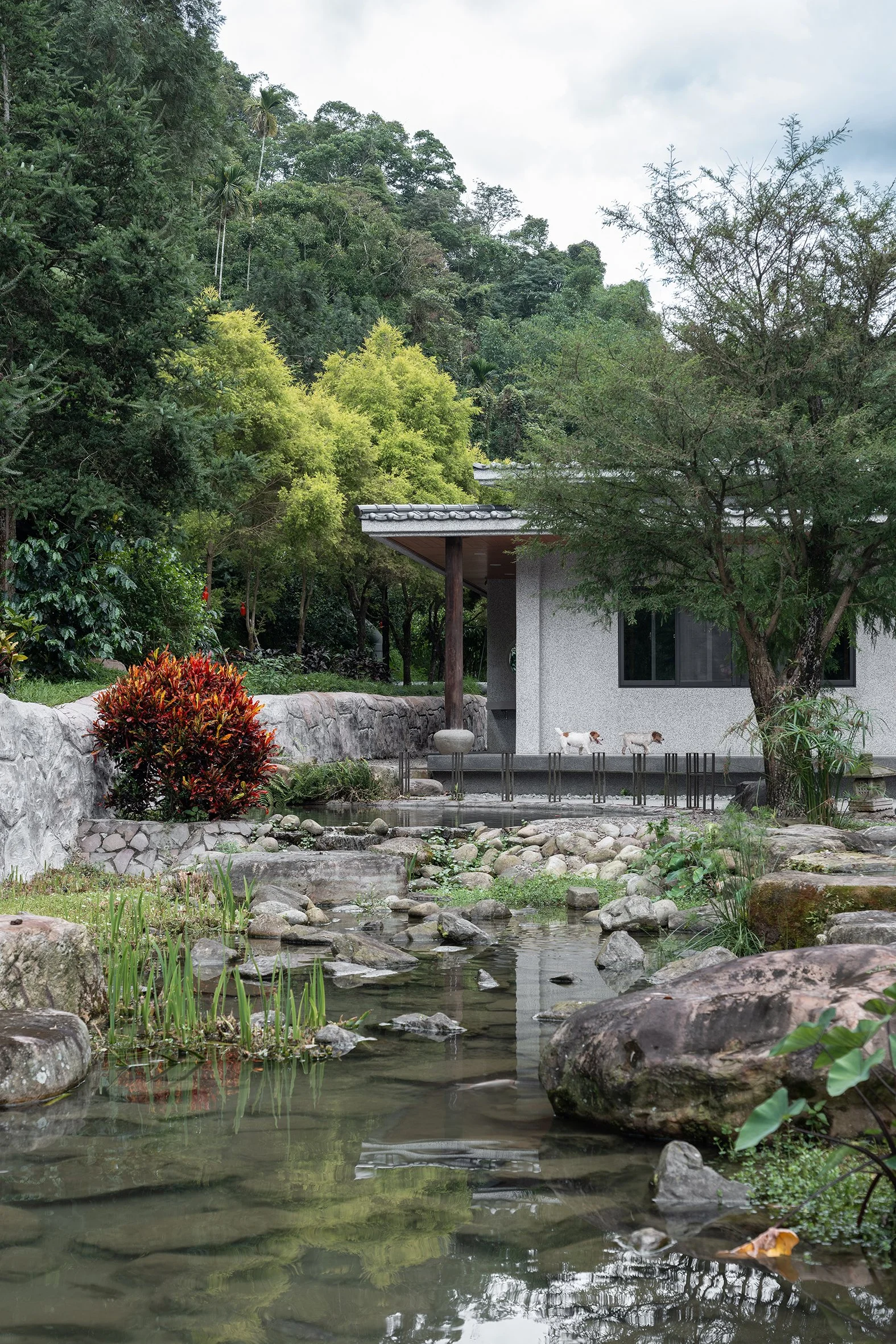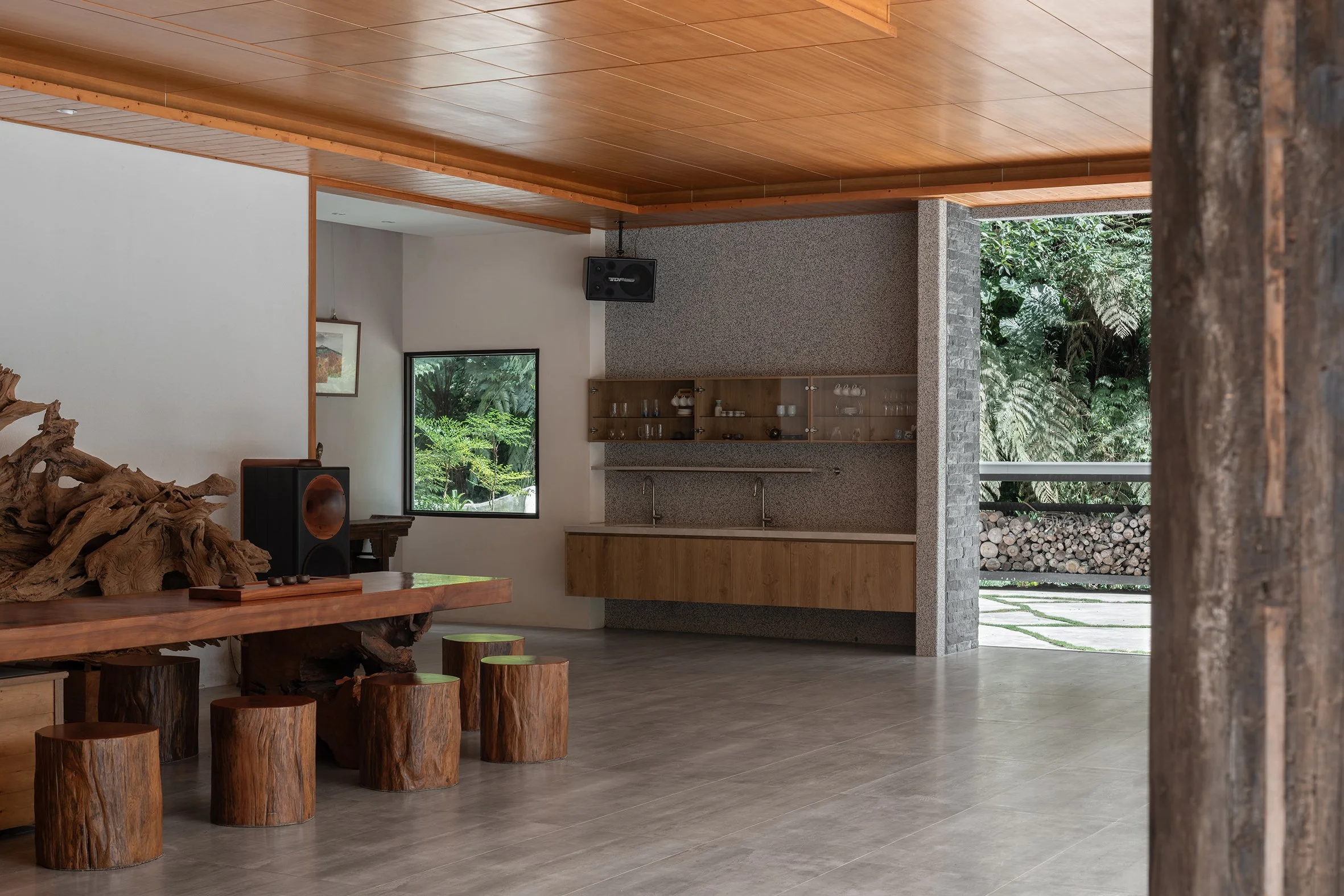Jinjing Lane Residence
Guesthouse
Tucked into the lush green folds of a forested hillside, this guesthouse is a serene and contemplative retreat, harmoniously blending traditional East Asian design sensibilities with modern architectural restraint.
Surrounding the guesthouse is a meticulously arranged 80-meter-long landscape, where a stepping stone path leads across a lawn toward a creek edged with large boulders and aquatic plants. The garden is not ornamental but experiential—a shifting composition that invites movement, reflection, and immersion in nature.
The structure presents a low, elongated profile capped with a gently sloping tiled roof that echoes the form of vernacular Taiwanese and Japanese rural homes. Its walls are finished in light pebble-dash concrete, lending both texture and neutrality, allowing the richness of the surrounding garden and forest to take visual precedence. A deep overhanging eave frames a generous shaded veranda that blurs the line between interior and exterior, encouraging slow movement and quiet contemplation.
At the heart of the guesthouse is a 105-square-meter covered outdoor pavilion—completely column-free, allowing for an unobstructed sense of openness and connection to the surrounding landscape. At the center of this space sits a 4.5-meter slab of timber used as a communal table, inviting meals and shared moments. Just behind the table, a striking fossilized tree root rests as a sculptural backdrop, its naturally intricate formations and textures formed over time, resembling an organic work of art. This space serves as the social soul of the guesthouse, used for hosting intimate dinner events, enjoying tea with friends, watching movies under the open air, or gathering for karaoke and celebration.
The guesthouse itself blends traditional charm with comfort. A fully equipped kitchen and dining room serve the needs of guests, while a large tatami room offers accommodation in the traditional style, its simplicity underscored by a framed floral painting and shoji-inspired paneling. The room is designed for rest and meditation, with soft natural light filtering in from a bamboo-framed window. Furnishings are sparse and intentional, reflecting the wabi-sabi aesthetic of understated elegance and impermanence.
Adding to its unique character, the guesthouse is furnished with a curated collection of antique Chinese furniture from the Ming Dynasty. Elegant cabinets, finely crafted side tables, and timeless wooden details bring a sense of history and cultural richness to the interior, creating a warm and dignified atmosphere that echoes the beauty of its natural surroundings.
Overall, the guesthouse is a meditative dwelling—at once rustic and refined—crafted for moments of shared meals, quiet solitude, and reconnection with the elemental rhythms of water, wood, and stone. It is not merely a building, but a lived experience shaped by its setting and seasons.
Location: Nantou County, Taiwan
Year: 2021–2023
Type: Residential
Status: Built
Team: Fieldnotes Architects (Architect, Interior & Landscape Designer), Zheng-Cheng Li (Contractor)
Photography: Yi-Hsien Lee & Associates (YHLAA)
